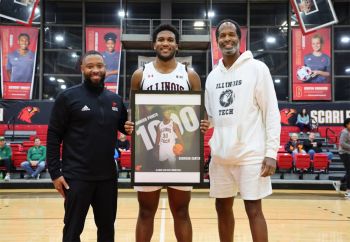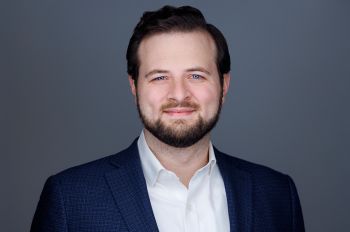Faculty and Students Honored with Annual Research Awards

Professor Jovan Brankov (M.S. EE ’99, Ph.D. ’02), Assistant Professor Amandeep Sandhu, and electrical engineering doctoral student Xin Huang are just three of the winners of the university wide research awards, which cap the 2020–21 academic year. Four faculty members, three graduate students, and two undergraduate students were honored in this annual Illinois Institute of Technology program.
“Illinois Tech faculty and students continue to discover, create, solve, and innovate in remarkable ways, as evidenced by this year’s contingent of university wide research awards. I am grateful for the good work of Fred Hickernell, our vice provost for research, our institute and center directors, and all of our faculty and students engaged in the research mission of our university,” says Provost Peter Kilpatrick.
Brankov, a longtime Armour College of Engineering faculty member who is recognized worldwide as an innovative researcher and a leading expert in medical imaging, X-ray phase-contrast imaging, and image analysis using machine learning, received the Sigma Xi/IIT Award for Excellence in Research Senior Faculty Award. He is joined by Sandhu, the Sigma Xi/IIT Award for Excellence in Research Junior Faculty Award winner, who teaches food science and nutrition through Lewis College of Science and Letters. She addresses issues that affect crops, food product development and optimization, and pharmacokinetic evaluation of dietary phytochemicals consumed by humans. Sandhu’s work provides data for national databases used by consumers and researchers all over the world, and more specifically, helps farmers and processors understand the chemical nature of their fruits, contributing to breeding strategies and health claims.
Huang, the Sigma Xi/IIT Award for Excellence in Research Student Award winner, has been a member of the Embedded Computing and Signal Processing Research Laboratory at Illinois Tech. His research in ultrasonic imaging and communication systems, signal processing, and image and video transmission has appeared in many journal and conference proceedings articles through the Institute of Electrical and Electronics Engineers.
Other individuals recognized this year were Assistant Professor Steve Nicholas Du Bois and Associate Professor Karl Stolley, winners of the Educational and Research Initiative Fund Award. Faculty members of Lewis College, they received the award for their joint project entitled “Pilot Testing an App-Based, Self-Compassion Intervention Among Sexual and Gender Minority Individuals Newly Diagnosed with HIV.”
Two graduate students were recognized with fellowships. Electrical engineering doctoral student Larissa Affolabi (M.Eng. Energy Systems ’19) received a Starr/Fieldhouse Research Fellowship. She will be conducting research on “Blockchain for Peer-to-Peer Transactive Energy Trading of Electric Vehicle Charging Stations in Power Distribution Networks” in collaboration with Distinguished Bodine Chair Professor Mohammad Shahidehpour and scientists at Argonne National Laboratory and with ComEd. Also receiving a Starr/Fieldhouse Research Fellowship is Miguel Angel Hernandez Morquecho, who will be conducting research on “Demonstration of Novel New Particle Identification Capabilities for LArTPC Neutrino Detectors” with Associate Professor Bryce Littlejohn and scientists at Fermi National Accelerator Laboratory.
Lastly, two undergraduate students each received a Toprani Undergraduate Research Fellowship, which specifically supports international undergraduates for summer research. Laasya Devi Annepureddy (BME 3rd Year) will be conducting research in the Department of Biomedical Engineering at Armour College, while Shayarneel Kundu (PHYS 3rd Year) will be doing so in the Department of Physics at Lewis College.
Photo: A scan from the Agent-Dependent Early Photon Tomography Cancer (ADEPT) Imager, which Professor Jovan Brankov teamed up with Illinois Tech Associate Professor Kenneth Tichauer to create with the intent of finding smaller tumors in the lymph nodes of breast cancer patients




